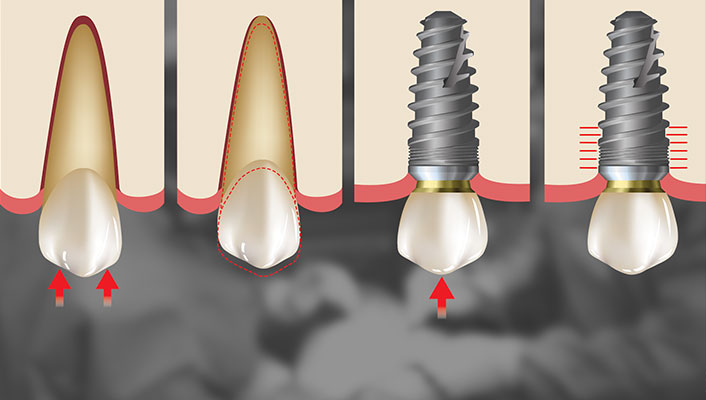- The functional orientation of the periodontal ligament
- The result of a dental implant’s direct bone interface
- The effect of occlusal forces on natural teeth versus dental implants
- Implant susceptibility to occlusal overload
- The key role of periodontal mechanoreceptors
- Effects of non-axial (horizontal) forces
- The principles of implant-protected occlusion
Principles of Implant Occlusion: Part 1 – Implants Are Not Teeth
Course Objectives
1 CE Credit
In comparison to natural teeth, dental implants are more susceptible to occlusal overloading issues. As such, ideal implant occlusion is essential for oral function and the prevention of implant-related complications. Dr. Randolph Resnik examines how teeth and implants differ in response to occlusal stress. Additionally, he discusses the health of the associated hard and soft tissues, mechanical stress and strain, and mechanical complications that may occur from occlusal overload. Topics include:
Summary
Clinicians must have an understanding of the fundamental differences between teeth and dental implants with respect to occlusal loading forces. Due to biomechanical differences between teeth and implants, care must be taken in developing occlusal schemes for prosthetic rehabilitation. Because dental implant occlusion can be complex, it’s imperative for clinicians to consider many factors in the formulation of an occlusal scheme for each specific type of prosthesis.
CAUTION: When viewing the techniques, procedures, theories and materials presented, you must make your own decisions about specific treatment for patients and exercise personal professional judgment regarding the need for further clinical testing or education and your own clinical expertise before trying to implement new procedures.
Recognition & Approval

Glidewell Education Center
Nationally Approved PACE Provider for FAGD/MAGD credit
Approval does not imply acceptance by any regulatory authority, or AGD endorsement. 3/1/2024 to 2/29/2028.
Provider ID# 216789
References
- Schwarz MS. Mechanical complications of dental implants. Clin Oral Implants Res. 2000;11 Suppl 1:156-8.
- Schulte W. Implants and the periodontium. Int Dent J. 1995 Feb;45(1):16-26.
- Parfitt GJ. Measurement of the physiological mobility of individual teeth in an axial direction. J Dent Res. 1960 May-Jun;39:608-18.
- Misch CE. Early crestal bone loss etiology and its effect on treatment planning for implants. Postgrad Dent. 1995;3:3-17.
- Misch CE. Dental implant prosthetics. 2nd ed. St. Louis: Mosby; 2014.
-
 Online CE CourseNext-Level Chairside Esthetics: Customizing Restorations with Stain, Glaze, and Finishing TechniquesIn this course, Dr. Justin Chi demonstrates how to elevate chairside restorations using advanced staining, glazing, and finishing techniques for monolithic restorations.
Online CE CourseNext-Level Chairside Esthetics: Customizing Restorations with Stain, Glaze, and Finishing TechniquesIn this course, Dr. Justin Chi demonstrates how to elevate chairside restorations using advanced staining, glazing, and finishing techniques for monolithic restorations. -
 Online CE CourseEsthetic Veneer Preparations: From No Prep to Full PrepIn this course, Dr. Danielle Brown provides a practical overview of veneer preparation techniques from no-prep, minimal-prep and traditional-prep veneers with step-by-step protocols.
Online CE CourseEsthetic Veneer Preparations: From No Prep to Full PrepIn this course, Dr. Danielle Brown provides a practical overview of veneer preparation techniques from no-prep, minimal-prep and traditional-prep veneers with step-by-step protocols. -
 Online CE CourseBonding and Temporizing Protocols: Tips for VeneersIn this course Dr. Danielle Brown offers practical guidance on veneer temporization and bonding techniques to improve patient comfort and clinical outcomes.
Online CE CourseBonding and Temporizing Protocols: Tips for VeneersIn this course Dr. Danielle Brown offers practical guidance on veneer temporization and bonding techniques to improve patient comfort and clinical outcomes.




